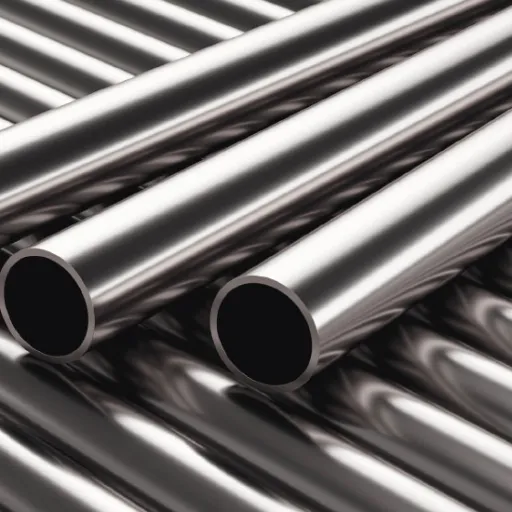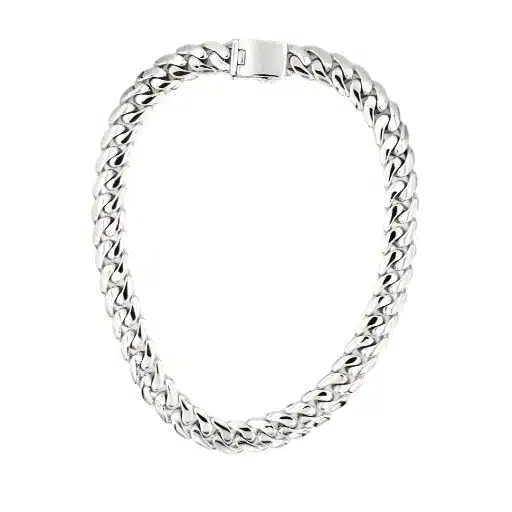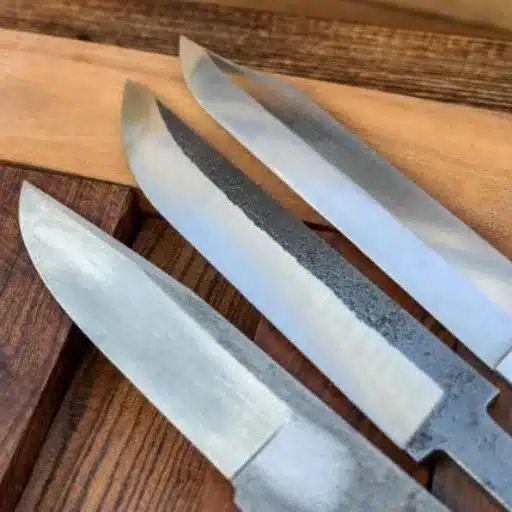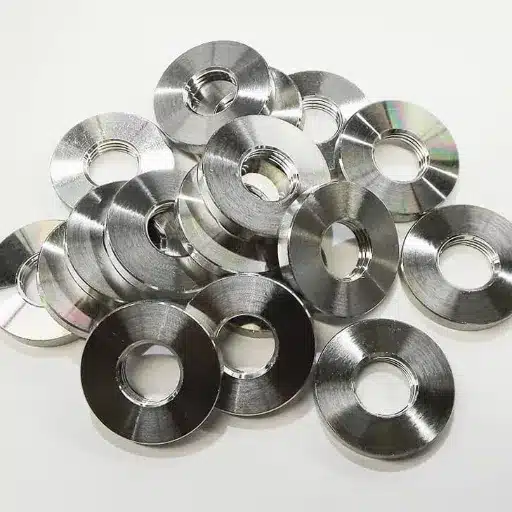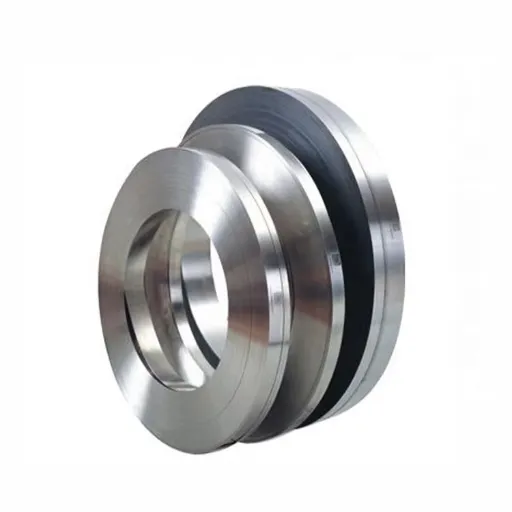There is a need for specifications like strength, serviceable life, or productivity as far as cars are concerned. Demands such as those mentioned above have been satisfied through HSLA HR340LA Sheets, which are essentially high-strength hot-rolled steel. These types of steel sheets have been manufactured in a manner that ensures their suitability for withstanding almost any load in the automotive industry. This text discusses the characteristics, advantages, and applications of HSLA HR340LA sheets, explaining why they are so popular among construction companies. If you work in the automotive industry or have an interest in how the amachimes and vehicle components are developed, a few minutes of your time will be well spent on this paper, as you will see how meaningful and profound these sheets are to the table.
Introduction to HSLA Steel
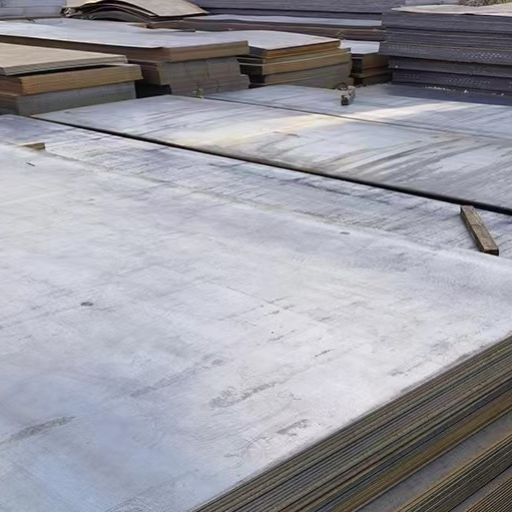
Due to its good mechanical stability and strength-to-weight ratio, this sahadrox material is ideal for applications in construction and industrial sectors, such as the automotive, power equipment, and machinery manufacturing industries. However, what makes HSLA different from high-carbon steels in terms of composition is the inclusion of elements such as titanium, vanadium, and niobium, or small amounts of all three elements. As a result, such steel has excellent corrosion resistance characteristics, being resolvable, can withstand high-strength walls that are traditionally required for such industries and sectors as the automobile industry, the building or construction industry, the heavy industrial or machinery industry, etc. HSLA’s great advantage is that it does not replace performance with its economics. It is beneficial in those industries. Accordingly, HSLA HR340LA sheets, being an otherwise simple material adapted even to the most robust structures, are preferred by engineers owing to their durability and resistance.
What is HSLA Steel?
High-Strength Low-Alloy (HSLA) structural steel is a type of alloy steel engineered with advanced mechanical properties, such as strength and corrosion resistance, yet lighter than most carbon steels and more economically viable.
Key Features of HSLA Steel
- High Strength-to-Weight Ratio
HSLA steel is designed to provide high levels of strength compared to traditional carbon steel for a given thickness or weight. This is particularly important for applications where structural deficiencies are a concern due to the accumulation of weight or excessive thickness.
- Enhanced Corrosion Resistance
With the addition of alloying elements such as chromium, nickel, or copper, this process is enhanced in reducing corrosion, particularly in aquatic or industrial environments.
- Improved Weldability
HSLA steels are more favorable for welding compared to conventional carbon steels, as this does not adversely affect the mechanical properties of the structure. As a result, it can be APIC3 pre-split, leaving fewer bulk chips made during the cutting process.
- Superior Toughness
In this type of steel, there is a significant degree of toughness, but also a notable brittleness at low temperatures, which makes it unsuitable for use in strict settings, such as frigid climates or heavy loads.
- Makes Business Sense
HSLA can outperform and cost less than most conventional alloyed steels. Moreover, its nature, which utilizes less material due to its hardness, makes the economy of many big investments.
- Application of HSLA HR340LA sheets.
Enforcement of these values through the use of HSLA HR340LA sheets seeks to improve the forms of construction, in conjunction with these building codes.
Importance of HSLA in the Automotive Industry
High-strength, low-alloy (HSLA) steel plays a vital role in the evolution of the automotive sector, as manufacturers seek ways to enhance the performance, efficiency, and sustainability of their products. As a consequence of the high strength-to-weight value of the HSLA steel, it enables a reduced-weight vehicle structure while still ensuring the durability of that structure. This helps significantly regarding the aspect of better fuel economy, which is one of the main issues as global fuel consumption regulations become more focused. As proffered by the World Steel Association, an advanced grade of steel, which is HSLA, among others, has advantages in terms of performance, whereby using such steel may allow reducing the weight of the vehicle by between 25 and 39% and this has a great impact in terms of CO2 emission saving over the lifetime of the car.
Additionally, the high strength of HSLA steels makes them quite interesting in that they can withstand stresses and absorb energy in the event of an accident, thereby improving safety. This material is also used in components that are most exposed to such impacts, i.e., the crash zones, such as the chassis and reinforcements. Additionally, these features enable car manufacturers to incorporate HSLA steel into intricate assemblies, eliminating the need for additional welding and machining steps, thereby increasing production efficiency, reducing costs, and achieving superior performance.
Another reason the use of HSLA has increased is its low cost. Steel, in the case of HSLA, can offer similar benefits at a significantly lower cost than other advanced materials, such as aluminum or carbon fiber, which is why HSLA is a favorable material for mass production. According to statistics, the global market for high-strength steel in automobiles is expected to increase significantly to tens of billions by the early 2030s, as most vehicles produced become more eco-friendly and energy-conserving.
HSLA steel can cater to the changing needs of the contemporary automotive industry, offering lighter weight, enhanced safety, affordability, and environmental friendliness, which makes it a necessary commodity for building vehicles of the future.
Mechanical Properties of HR340LA Sheets
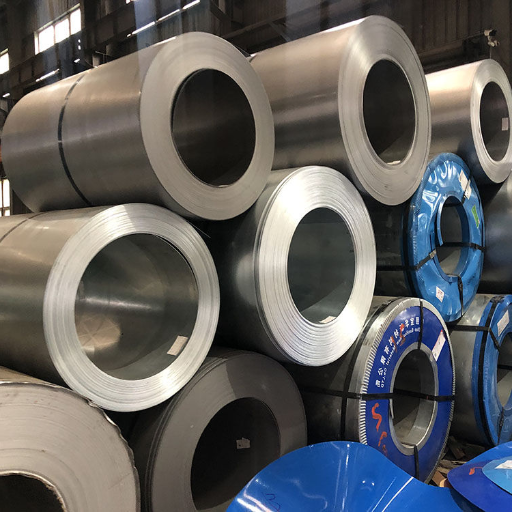
The storage device HR340LA sheets enhance strength and formability simultaneously. The basic mechanical characteristics are:
- Yield Strength: Normal Value is 340 MPa; thus, tensile loading may not cause permanent strain.
- Tensile Strength: 480 MPa, such that it endures under tension.
- Elongation: Not less than 20%, indicating its extensibility.
The features of HSLA HR340LA sheets recognize the functional usage in cases where emphasis is placed on strength alongside flexibility and ease of manufacturing.
Yield Strength and Minimum Yield Strength
Yield strength refers to the stress level at which a material transitions from elastic to plastic deformation, meaning it will not recover its original dimensions once the stress is released. However, the minimum yield strength is the lowest value guaranteed by the material’s properties, given the conditions specified. These parameters are crucial in determining whether the material can be used for a specific industrial purpose.
Here are five such yield strength properties for various commonly used engineering and manufacturing materials, along with their respective minimum yield strength values.
- Carbon Steel A36
- Yield Strength: 250 MPa
- Minimum Yield Strength: 235 MPa
- Stainless Steel 304
- Yield Strength: 215 MPa
- Minimum Yield Strength: 200 MPa
- Aluminum Alloy 6061-T6
- Yield Strength: 276 MPa
- Minimum Yield Strength: 240 MPa
- Titanium Alloy Grade 5 (Ti-6Al-4V)
- Yield Strength: 880 MPa
- Minimum Yield Strength: 795 MPa
- HR340LA Sheet Steel
- Yield Strength: ~340 MPa
- Minimum Yield Strength: 300 MPa
Knowledge of these values enables a designer or engineer to make an informed choice of a material that can withstand the particular stresses in question without compromising the design or safety of the structure.n/Ầozilla
Steel Mechanical Properties Overview
Steel, as it is, is a metallic substance characterized by high mechanical strength; therefore, it is widely used in industry. Below are five such properties and their corresponding values for frequently used steels:
- Tensile
- Values: 400–550 MPa ( mild steel)
- Meaning: The highest strain that a material can take under tension.
- Yield Strength
- Values: 250–400 MPa ( structural steel)
- Meaning: The stress at which a material will undergo plastic rather than elastic deformations, in other words, the stress above which any deformations are completely irreversible.
- Hardness
- Values: 120 to 200 HB ( as in the example of mild steel in Brinell hardness scale)
- Meaning: It is a measure of how hard a material is and how it tends to be deformed, penetrated or scratched.
- Elongation at Rupture
- Values: 15 to 25% ( It varies, however, with different varieties of steel)
- Meaning: How much a material can be drawn out before it breaks, or in other words, its ductility.
- Elastic Modulus
- Average Value: 200 GPa
- Explanation: It defines how much material resists deformation by stress and returns to its original state – elasticity.
All the above characteristics exhibit a broad variation, depending on the steel type, its chemical composition, and the processes involved in its manufacture and treatment. Knowledge of this helps determine the appropriate type of steel to use in physical and engineering aspects.
Comparative Analysis with Other Steels
| Parameter | HR340LA | HR300LA | HR420LA | HR550LA |
|---|---|---|---|---|
| Yield Strength (MPa) | 340-440 | 300-400 | 420-520 | 550-670 |
| Tensile Strength (MPa) | 420-540 | 380-500 | 480-600 | 610-750 |
| Elongation (%) | ≥22 | 28 | 22 | 16 |
| Carbon Content (%) | ≤0.12 | ≤0.12 | ≤0.12 | ≤0.12 |
| Manganese Content (%) | ≤1.50 | ≤1.30 | ≤1.60 | ≤1.80 |
| Silicon Content (%) | ≤0.50 | ≤0.50 | ≤0.50 | ≤0.60 |
| Weldability | Excellent | Excellent | Excellent | Good |
| Formability | High | High | Moderate | Moderate |
| Applications | Automotive, construction | Automotive, machinery | Structural components | Heavy-duty machinery |
| Coating Options | Galvanized, Galvannealed | Galvanized, Galvannealed | Galvanized, Galvannealed | Galvanized, Galvannealed |
Chemical Composition of HR340LA
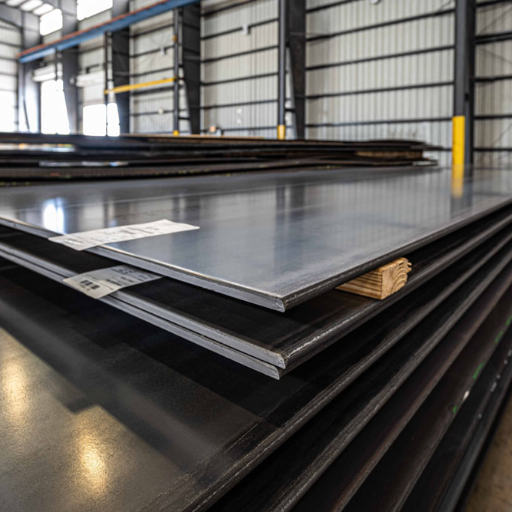
The material composition of HR340LA is detailed as follows (weight percentages):
- C 0.08 % max 2
- Mn 1.40 % max
- P 0.025 % max
- S 0.015 % max
- Nb 0.01 ~ 0.09 %
- In D. Ti 0.15 % max
This structure results in high strength combined with good plasticity and weldability, all of which are necessary characteristics for the structural and automotive grades of HSLA HR340LA sheets.
Elements and Their Roles in HSLA Steel
HR340LA, like other High-Strength Low-Alloy (HSLA) steels, is developed with a specific composition of elements to achieve a precise ratio of mechanical properties for certain processes. The functions of the principal components are as follows:
- Carbon (Spell ) : This is an indispensable element in steel, enhancing its strength and hardness. At the same time, its content in HSLA steel is limited (not exceeding 0.08% in HR340LA) to improve the weldability of the steel and prevent brittleness, making this steel suitable for automotive and structural applications.
- Manganese (Mn): Manganese increases both toughness and hardening of the steel to make it less susceptible to deformation. Additionally, it facilitates the removal of oxygen during smelting. Manganese is incorporated into steel up to 1.40% without any deleterious effects on ductility.
- Phosphorus (P): Considered an impurity in most cases, phosphorus in moderation (less than or equal to 0.025% in HR340LA) improves the HSLA steel’s resistance to corrosion. Its content is limited as it renders the steel brittle.
- Sulfur (S): This is another element that is limited in most HSLA steels (no more than 0.015%) to improve the toughness of the steel and minimize the occurrence of brittle failures at section changes. Also, a decrease in sulfur content improves the machinability and weldability of the steel.
- Niobium (Nb): Niobium is one of the essential alloys used in HSLA steels at levels between 0.01- 0.09%. It greatly helps in improving the concentration of centers owing to the enhancement of the yield strength and toughness. Niobium also enhances the strength of steels by improving wear and fatigue properties.
- Titanium (Ti): It has a maximum content of 0.15% and is also added to act as a grain refiner and stabilizer. This is due to its ability to form nitrides and carbides with nitrogen and carbon, respectively, thereby hindering grain growth upon heating. This improves both the strength and the high-temperature resistance of the material.
The elements listed below are considered while preparing HR340LA high-strength and formable sheets. Such a composition enables the development of HR340LA for specific applications where the casualty is a lightweight material, such as components in the automotive industry, without strength deficiency, with the intended purpose in mind.
Compliance Details for GMW3032M and VDA 239-100
The HR340LA steel grade is carefully formulated to comply with worldwide standards such as GMW3032M and VDA 239-100. These standards prescribe requirements in detail which promote mechanical properties, quality control and the application’s control. Below are the five key deviations from these standards:
- Yield Strength: The material conforms to the minimum yield strength thresholds set in GMW3032M and VDA 239-100, ensuring operability and materials resistant to high stress.
- Tensile Strength: Because of the tensile strength criterion, the use of such material is justifiable for load-bearing applications.
- Elongation: The criteria regarding elongation are very precise, allowing for sufficient strained steel layers during forming operations.
- Surface Quality: The HR340LA deviates from the high surface quality required for cases involving automotive skin applications, both for ornamental and practical purposes.
- Chemical Composition: Adhering to the specific chemical compositions outlined in the present standards ensures that the material is usefully strong, has good formability, and can resist hostile environments.
Satisfaction of all these factors also enables HR340LA to be resourced for highly sensitive and critical industries, where accuracy and capability are paramount.
Impact on Performance Characteristics
When it comes to the requirements needed for HSLA HR340LA sheets, their performance is directly affected. I notice that the material provides superior strength and formability, which is crucial for demanding applications. Its ability to operate in harsh environments, within the given time frame, also increases the benefits, which include durability and service life. As expected, in the same vein, HSLA HR340LA sheets consistently meet the constant pressures of industrial demand for effective results.
Applications of HR340LA Sheets
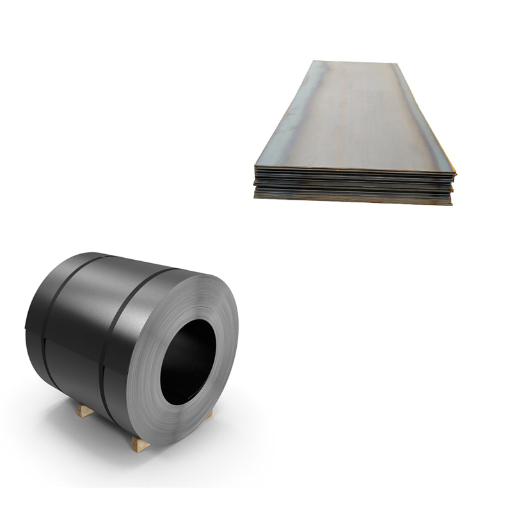
Materials in industries that require good strength and formability are in use, such as HR 340 LA. In automobiles, these include structural reinforcement components and non-deformable brackets, and other structural elements. These are also found in the manufacture of home appliances and construction equipment, among other products requiring rigid functionality. This material provides adequate strength while allowing excellent elasticity, making it possible to be used without shape modification in all these applications.
Use in Automotive Manufacturing
The importance of advanced high-strength steels (AHSS) in present car making cannot be overstated. AHSS offers the most significant advantage in weight reduction without compromising power, efficiency, and safety in vehicles. In this regard, several leading brands have successfully incorporated and achieved success in reducing vehicle weight and increasing mileage through the application of AHSS. According to WorldAutoSteel organization statistics, a 10% reduction in vehicle weight through the use of lightweight materials, such as AHSS, results in a 6-8 increase in fuel economy.
These steels are mainly used for poles, door bars, stage units, and bumpers. MarketsandMarkets also reported that the advanced high-strength steel market was valued at $ 17.5 billion in 2022 and is expected to grow at a CAGR of 10.8% to exceed $29.1 billion by 2027. This suggests a wider application in the automotive industry, attributed to regulatory constraints on emissions and safety levels.
For example, dual-phase (DP) and transformation-induced plasticity (TRIP) steels from HSLA HR340LA sheets are used to maximize energy absorption in the event of a crash and minimize the risk of injuries to occupants. The use of such materials also enables the design and development of thin and lightweight sections without compromising the vehicle’s strength, which also complies with the latest environmental objectives in vehicle design.
The greater implementation of this material in the automotive industry can be expected as the need for lightweight and durable green vehicles grows. Finally, as the rate of progress in the automotive industry intensifies, it is believed that AHSS will continue to be a staple material essential for transforming the industry.
Benefits of Cold Forming Processes
HSLA HR340LA sheets are often used for cold-forming applications, as they offer several advantages to stampers in these conditions. To begin with, their versatility and malleability have always been primary features that have been appreciated, as complex shapes can be formed without compromising load-bearing capacity.
This is very important, as it allows one to create light and strong vehicle parts, thereby improving the interior designs and safety measures of various automobiles.
Moreover, the AHSS also has very high specific strength, which means that it is possible to manufacture thinner sections of components without loss of strength. According to the most recent industry standard analysis reports, it has been demonstrated that structural components, when made with AHSS, can be up to 25% lighter in weight without compromising performance capabilities. This directly enhances the vehicle’s mileage and reduces CO2 emissions in cars, which is the most crucial objective of sustainable development regarding cars at present.
When AHSS is used in cold forming, production efficiency is also increased. By eliminating heating, energy usage is reduced. There is a written assumption that cold forming of AHSS takes 30% less time, resulting in a decrease in economic cost.
The use of AHSS in cold forming technology introduces numerous changes, including those related to design methods, cost management, and ecology, which is why this material will continue to find applications in car production and engineering in general.
Examples of HR340LA Applications
| Application Area | Example Uses | Key Benefits |
|---|---|---|
| Automotive Industry | Body panels, chassis frames | High strength, lightweight |
| Construction Sector | Structural beams, columns | Durable, load-bearing |
| Machinery Manufacturing | Heavy equipment parts, brackets | Toughness, wear resistance |
| Agriculture Equipment | Durable field machinery components | High stress tolerance |
| Bridges | Load-bearing components | Fatigue resistance |
| Pressure Vessels | High-pressure tanks | Excellent weldability |
| Shipbuilding | Hull reinforcements | Corrosion resistance |
Benefits of Using HSLA HR340LA Sheets
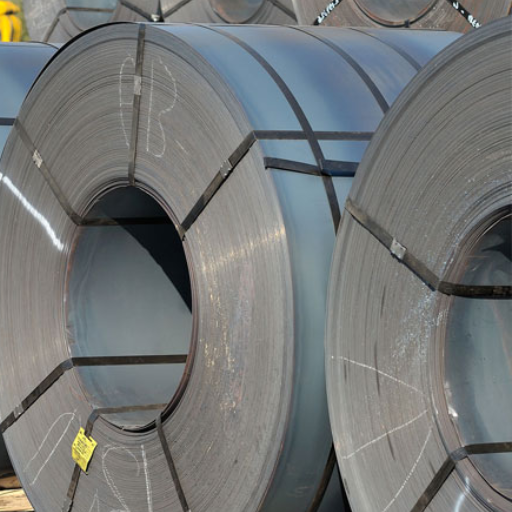
| Benefit | Description |
|---|---|
| High Strength | Withstands heavy loads and stress |
| Lightweight | Reduces overall material weight |
| Excellent Weldability | Easy to join with various methods |
| Good Formability | Suitable for complex shapes |
| Corrosion Resistance | Durable in harsh environments |
| Cost-Effective | Balances performance and affordability |
| Fatigue Resistance | Ideal for cyclic loading conditions |
| Versatile Applications | Used in automotive, construction, etc. |
Weight Reduction and Improved Fuel Efficiency
The HSLA HR340LA sheets are especially beneficial in industries such as the automotive industry, where weight is a crucial factor—the need for strong yet lightweight materials led to the development of such sheets for steel components. Conventional steels, because they are dense, tend to increase the weight of the material, which, as a consequence, may cause deterioration in fuel economy. Directly applying this to the application, and a higher mileage provided augurs well for both the consumer’s and the company’s well-being.
For instance, research suggests that cutting down a vehicle’s weight by 10% may improve fuel consumption by 6 ∼ 8%. HSLA HR340LA sheets help achieve this without compromising the strength or the safety of the vehicle. Moreover, the HR340LA sheets’ high specific strength allows for minimum vehicle weight and maximum crash safety.
Additionally, the reduced weight of structures that utilize HR340LA steel sheets also benefits other industries, such as the construction industry. Lightweight materials not only reduce the cost of transportation but also make handling and installation much easier. In modern industrial applications, the higher level of energy savings, combined with a minimal production cost, makes HR340LA sheets the material of choice in several industries.
In addition to these characteristics, HR340LA steel sheets can be effectively welded and joined, thereby increasing the range of applications, especially those involving sheet metal fabrication.
Cost-Effectiveness in Production
HSLA HR340LA sheets have enhanced the aspect of cost-effectiveness at various stages of the manufacturing process. Five of these dimensions are listed below:
- Material Savings
HSLA HR340LA sheets are very tough and lightweight. This reduced the quantity of raw material used in manufacturing, hence saving more money on raw material.
- Savings on Energy
The best energy efficiency is achieved in the forming and welding process of HR 340 LA, with other advanced figures, resulting in utility expenses that are practically at the low end.
- Reducing Surplus
Due to its favorable forming and high-strength properties, HR 340 LA produces less scrap and promotes high yields during cutting.
- Condensed Logistics Costs
HR340LA sheets are featherweight compared to other materials, and therefore, transportation costs are alleviated because more materials can be loaded and carried when vehicles are transporting materials as opposed to transporting few materials.
- Arranged to Further Equipment Sustainment
Among other things, the easy or, usually, smooth production properties of hr 340la tend to cause less wear and tear on their plant machinery, thus reducing repair costs and prolonging the useful life of machines.
Enhanced Safety Features in Vehicles
In terms of enhanced safety features in vehicles, I consider that HR340LA is an integral part of ensuring vehicle safety. The HSLA HR340LA sheets provided are a high-strength material that enhances the encapsulation in the event of impact. Furthermore, the lightweight nature of this alloy aids in improving control and suspension, which is directly related to accident avoidance measures.
References
- Springer – Study of the effect of microstructure characteristics on corrosion resistance of cold-rolled micro-alloyed sheet steels (HSLA)
Link to article - Springer – Studying the Factors Affecting the Corrosion Resistance of Cold-Rolled Products of HSLA Steels
Link to article - TU Dortmund – High Strength Impact Welding of HSLA 340 to Al 5754 and Application Prototype
Link to article
Frequently Asked Questions (FAQ)
What are HSLA HR340LA sheets and their key features?
HSLA HR340LA sheets are high-strength low-alloy steel sheets known for their excellent mechanical properties, including high yield strength and impact strength. These sheets are designed for structural components and are ideal for applications requiring good formability and weldability.
What is the yield strength of HR340LA steel?
The minimum yield strength of HR340LA steel is approximately 340 MPa, making it suitable for various applications where high strength is required. This level of yield strength ensures that the material can withstand significant stress without permanent deformation.
How does the chemical composition of HSLA steels affect their performance?
The chemical composition of HSLA steels, including elements like niobium and low carbon content, significantly influences their mechanical properties. These elements enhance the steel’s strength and toughness while maintaining its excellent cold-forming capabilities.
What are the advantages of using HSLA steels for cold forming?
HSLA steels, particularly those in the HR340LA range, exhibit excellent cold-forming properties. Their low alloy content and favorable mechanical properties make them suitable for producing complex shapes and components without compromising strength.
How does the weldability of HR340LA steel compare to other steel grades?
HR340LA steel exhibits good weldability due to its low carbon content and specific alloying elements. This characteristic enables effective joining processes, making it a preferred choice for applications that require welded structural components.
What are the typical applications of hot-rolled high-strength HSLA sheets?
Hot-rolled high-strength HSLA sheets are commonly used in the automotive industry, construction, and manufacturing of structural components. Their high yield strength and excellent fatigue strength make them ideal for applications such as beams and suspension systems.
What is the significance of rolled HSLA grades in manufacturing?
Rolled HSLA grades, including HR340LA, are essential in manufacturing due to their excellent mechanical properties and versatility. These grades are suitable for various applications, providing cost-effective solutions while maintaining high performance in structural integrity.
How do the mechanical properties of HSLA steels contribute to their structural performance?
The mechanical properties of HSLA steels, such as increased yield strength and good fatigue resistance, enable the weight reduction of structural components. This is particularly beneficial in automotive applications, where reducing weight can lead to improved fuel efficiency and performance.


